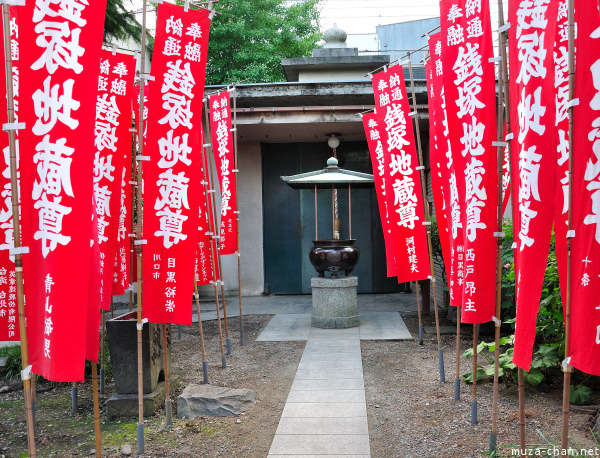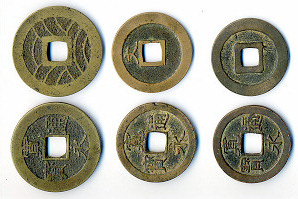Behind the Senso-ji complex in Asakusa, there is a small temple, Zeniduka-Jizo, with a very interesting story, one of those stories that makes you wonder what would you have done in the same situation.
On the place of today’s temple, at the beginning of the 18th century, there used to be the courtyard of a family named Yamaguchi. One day, while working in the garden, the woman discovered a pot filled with Kanei-Tsuhou coins (money used in Japan from the beginning of the Edo period until the beginning of the Meiji era).
The woman was afraid that from then on, the family will rely solely on those money, will stop working and will decline, so she… re-buried the money.
Soon, the Yamaguchi family become prosperous. On the place where the coins are buried they enshrined Jizo, and later the temple build there was named Zeniduka, “Coin Mound”.
The temple we see today was rebuilt in 1964.
În spatele complexului Senso-ji se află un mic templu, Zeniduka-Jizo, cu o poveste deosebită, una dintre acele întâmplări care te fac să te întrebi oare ce ai fi făcut dacă ai fi fost în locul persoanei respective.
Pe locul pe care se află astăzi templul, la începutul secolului al XVIII-lea, era curtea familiei Yamaguchi. Într-o zi, în timp ce săpa în grădină, femeia a descoperit un vas plin cu monede Kanei-Tsuhou (bani folosiţi în Japonia de la începutul perioadei Edo şi până la începutul perioadei Meiji).
Femeia s-a temut că familia se va baza pe banii găsiţi, nu va mai munci şi va decade, aşa că… a îngropat banii la loc.
Curând, familia Yamaguchi a început să prospere. Pe locul pe care se află îngropate monedele, au adus statui Jizo, iar mai târziu, templul construit pe acest loc a primit numele Zeniduka, adică “movila cu monede”.
Templul pe care-l vedem astăzi a fost reconstruit în 1964.



